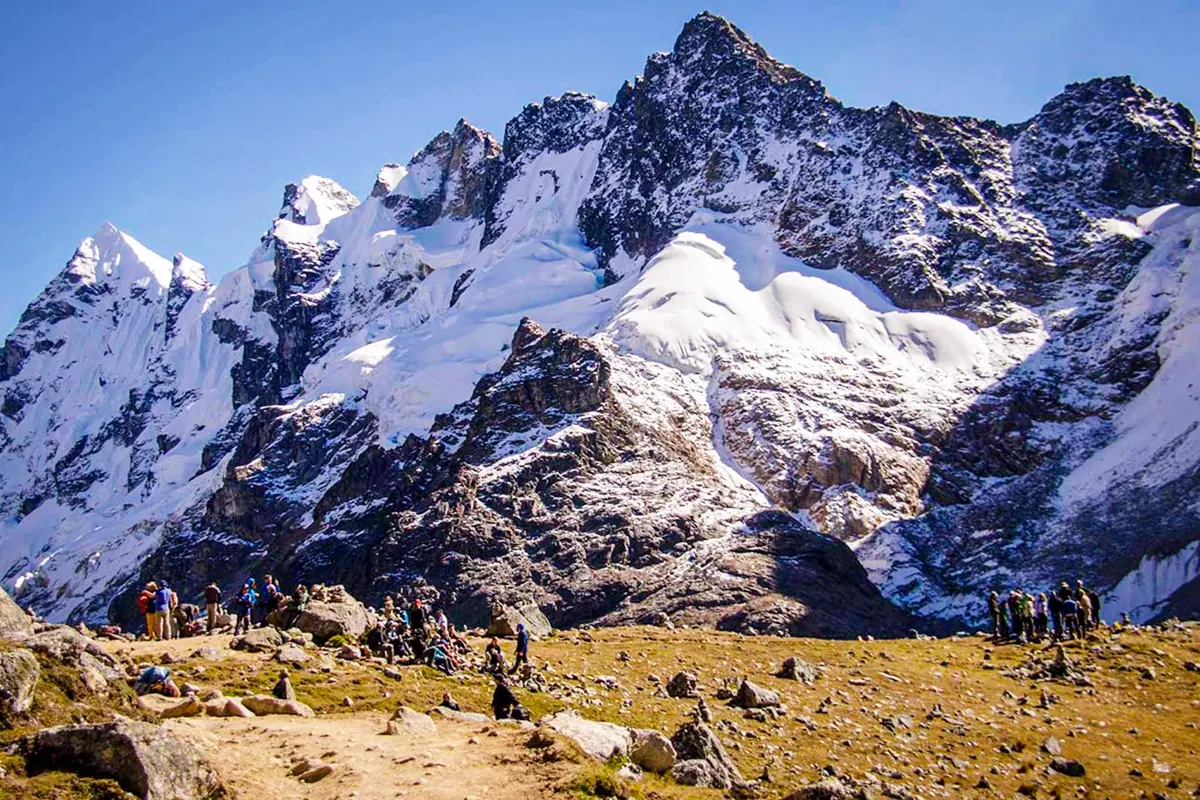Best Season to Do the Salkantay Trek

Do the Salkantay Trek
The majestic route to the Salkantay snow-capped mountain is one of the most impressive hikes in Peru. With landscapes that combine snowy peaks, cloud forests, and high jungle, doing the Salkantay Trek has become one of the favorite experiences for adventurers visiting Cusco. But one of the most common questions among those planning this trip is: what is the best time to live this experience?
In this guide, you will discover month-by-month weather conditions, practical tips, and the best times to take on the challenging Salkantay Trek to Machu Picchu. Everything you need to plan your adventure with our travel agency in Peru.
When is the Best Season to Do the Salkantay Trek?
The Cusco region has two well-defined seasons: the dry season (from May to October) and the rainy season (from November to April). Each season offers a different experience for those who want to do the Salkantay Trek.
Dry Season (May to October)
- Dry and stable weather
- Trails in good condition
- Clear skies and starry nights
- Daytime temperatures between 64°F and 72°F
It is considered the best season to do the Salkantay Trek. Visibility is excellent, and you can fully enjoy the mountain scenery, glaciers, and lakes like Humantay.
Rainy Season (November to April)
- Higher chance of rain
- Slippery trails and possible temporary closures
- Lush vegetation and active waterfalls
- Temperatures between 50°F and 68°F
Although less recommended, some travelers prefer this season to enjoy livelier nature and the tranquility of less crowded paths.
Table: Month-by-Month Weather Guide for the Salkantay Trek
| Month | Weather Conditions | Recommended? |
|---|---|---|
| January | High rainfall, unstable trails | Not recommended |
| February | Heavy rains, landslide risk | Not recommended |
| March | Rain decreases, better visibility | Conditional |
| April | Start of dry season, cool weather | Recommended |
| May | Clear skies, ideal conditions | Ideal |
| June | Mild, sunny days | Recommended |
| July | Peak of dry season, very crowded | Recommended |
| August | Good weather, fewer crowds | Recommended |
| September | End of dry season, green landscapes | Ideal |
| October | Light rain, fewer tourists | Conditional |
| November | Start of rainy season, still passable trails | Conditional |
| December | Frequent rains, wet landscapes | Not recommended |
Difficulty and Preparation for the Salkantay Trek
Doing the Salkantay Trek requires a moderate to high fitness level. The highest altitude reaches 4,650 m.a.s.l. on the second day, which can cause altitude sickness if you’re not well acclimated.
Tips to Prevent Altitude Sickness:
- Rest properly the first few nights in Cusco
- Drink plenty of water and avoid heavy meals
- Drink coca leaf infusions or chew coca leaves
- Bring medication if necessary (consult a doctor beforehand)
Why Do the Salkantay Trek?
This trek is not only an alternative to the traditional Inca Trail but also a route that takes you through diverse and stunning landscapes: glaciers, forests, turquoise lakes, and finally to Machu Picchu. It also allows you to visit Andean communities and experience ancestral traditions.
Natural Highlights Along the Way
- Salkantay Mountain: iconic and spiritual landmark
- Humantay Lake: one of the most photographed spots
- High jungle: diverse flora, fauna, and coffee plantations
Accommodations and Domes
During the trek, many tour operators offer experiences in geodesic domes, which enhance comfort and provide a unique overnight experience facing unparalleled landscapes.
Recommended Tours from Our Travel Agency in Peru
- 4-Day Salkantay Trek: perfect for those looking for a short and intense route
- 5-Day Salkantay Trek: more complete option with Machu Picchu visit
- Salkantay with Rainbow Mountain: combines nature and color
Practical Tips Before Doing the Salkantay Trek
- Pack waterproof, lightweight, and warm clothing
- Sturdy trekking shoes
- Sunscreen and insect repellent
- Water purification tablets or filter
- Avoid overpacking: take only what’s necessary
Frequently Asked Questions
Do You Need a Permit to Do the Salkantay Trek?
No official permit is required, but registering at the local tourism office is recommended if you’re traveling independently.
Is the Trek Safe?
Yes, it is safe. However, as with any outdoor activity, it’s important to follow your guide’s instructions and stay alert to weather changes.
How Many Days Should You Acclimate in Cusco?
It’s ideal to stay at least two days in the city before starting the trek to adjust to the altitude.
Conclusion
Doing the Salkantay Trek is a transformative experience. Whether in the dry or shoulder season, every step toward the summit connects you with the majesty of the Peruvian Andes. If you seek an unforgettable adventure, dreamlike landscapes, and cultural connection, this route is for you.
From Travels to Machu Picchu, we invite you to experience this journey in the safest and most enriching way possible.
Contact us: info@travelstomachupicchu.com | +51 984 363748






